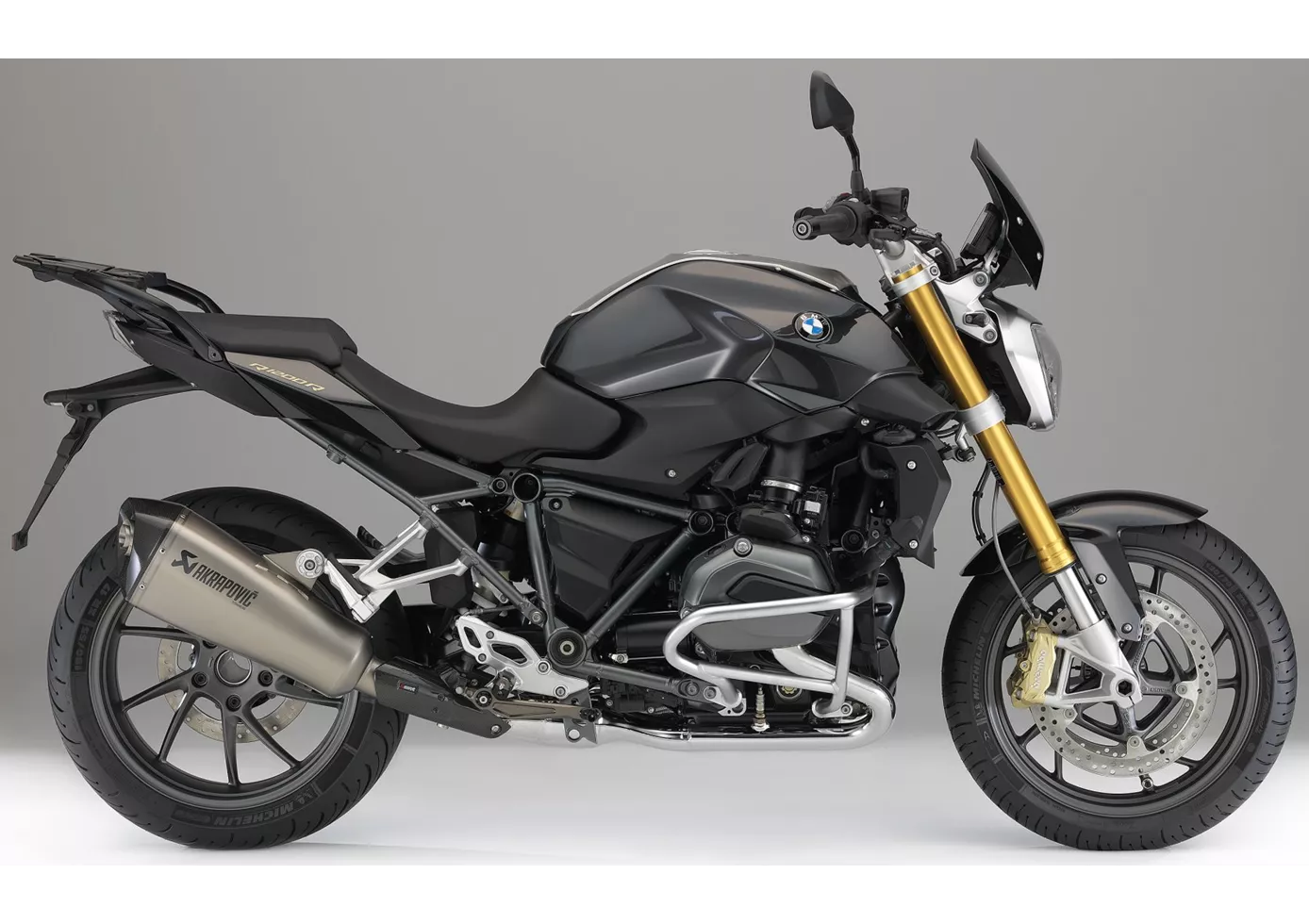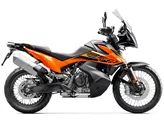BMW F 900 XR 2020 vs. BMW R 1200 R 2015

BMW F 900 XR 2020

BMW R 1200 R 2015
Overview - BMW F 900 XR 2020 vs BMW R 1200 R 2015
The BMW F 900 XR 2020 and the BMW R 1200 R 2015 are both sporty motorcycles with their own unique features and strengths. Let's compare them in detail.
Starting with the engine and drive train, the BMW F 900 XR 2020 is equipped with an in-line, 2-cylinder engine that produces 105 HP of power and 92 Nm of torque. It has a 4-stroke engine with liquid cooling and a displacement of 895 ccm. The transmission is a chain drive. On the other hand, the BMW R 1200 R 2015 features a boxer engine with the same number of cylinders and strokes. It has a higher power output of 125 HP and torque of 125 Nm. The engine is air-cooled and has a displacement of 1170 ccm. The transmission is a prop shaft drive.
In terms of suspension, the BMW F 900 XR 2020 comes with an upside-down telescopic fork at the front and a swing arm suspension at the rear. The BMW R 1200 R 2015, on the other hand, features a telescopic fork at the front and a paralever suspension at the rear. Both motorcycles have a steel frame, with the BMW F 900 XR 2020 having a twin-tube, load-bearing engine frame type, and the BMW R 1200 R 2015 having a load-bearing engine frame type.

BMW F 900 XR 2020
When it comes to braking, both motorcycles have double disk brakes at the front with four pistons and radial technology. This ensures efficient and powerful braking performance.
In terms of dimensions and weights, both motorcycles have the same front and rear tire width and diameter. The BMW F 900 XR 2020 has a slightly longer wheelbase of 1518 mm compared to the BMW R 1200 R 2015 with a wheelbase of 1515 mm. The seat height of the BMW F 900 XR 2020 is also slightly higher at 815 mm compared to the BMW R 1200 R 2015 with a seat height of 790 mm. The kerb weight of the BMW F 900 XR 2020 is 211 kg with ABS, while the BMW R 1200 R 2015 weighs slightly more at 231 kg with ABS. The fuel tank capacity of the BMW F 900 XR 2020 is 15.5 l, while the BMW R 1200 R 2015 has a larger fuel tank capacity of 18 l.
Now let's talk about the strengths of each motorcycle. The BMW F 900 XR 2020 has a resilient and powerful engine, allowing for a thrilling riding experience. It also offers variable ergonomics, allowing riders to adjust the handlebars, seat, and footrests to their preference. The motorcycle provides sufficient wind protection, making long rides more comfortable. The Brembo brakes on the BMW F 900 XR 2020 offer excellent stopping power. Additionally, the motorcycle has a stylish look and a wide range of accessories available for customization.

BMW R 1200 R 2015
On the other hand, the BMW R 1200 R 2015 has a sporty look and a powerful engine, delivering a thrilling riding experience. It also has a good sound, adding to the overall enjoyment of riding. The comfortable seating position allows for long rides without discomfort. The motorcycle comes with ABS and traction control as standard, ensuring safety on the road. It also offers two riding modes for added versatility.
However, both motorcycles have their weaknesses. The BMW F 900 XR 2020 has been noted to have a behavioral sound, which may not be to everyone's liking. The BMW R 1200 R 2015, on the other hand, has many cool features that are only available at an extra cost. Additionally, the rev counter on the BMW R 1200 R 2015 is poorly readable, which may be inconvenient for some riders.
In conclusion, the BMW F 900 XR 2020 and the BMW R 1200 R 2015 are both impressive motorcycles with their own set of strengths and weaknesses. The BMW F 900 XR 2020 offers a resilient and powerful engine, variable ergonomics, and stylish looks, while the BMW R 1200 R 2015 has a sporty look, powerful engine, and comfortable seating position. Riders can choose based on their preferences and riding style.
Technical Specifications BMW F 900 XR 2020 compared to BMW R 1200 R 2015
Pros and Cons in comparison
Pros and Cons in comparison
BMW F 900 XR 2020

The new BMW F 900 XR proves that it now needs no more than the middle class. With 105 hp, you are never underpowered in any situation and the two-cylinder offers enough elasticity to be both relaxed and very sporty on the road. Its solid quality and proven high-volume technology of the F 850 series make it a perfect companion if you want to be sporty on the road with a high level of comfort. As a basis, the equipment is sufficient, but the BMW accessories programme gives enough options to put together your dream motorbike (recommendation: Gearshift Assistant Pro!).
BMW R 1200 R 2015

The predecessor was already able to be ridden in a sporty manner as well as convincing on tours, the new R 1200 R can do even more - thanks to the pannier system (of course at extra cost), travelling is still no problem, but it masters sport even better. Thanks to the now partially water-cooled boxer twin-cylinder engine, it is wonderfully agile - 125 hp may not seem like much on paper, but the engine pushes incredibly and behaves in a cultivated manner to boot. The chassis and brakes also score highly and the seating position is sporty and upright, covering a wide spectrum from wonderful fun to long-distance touring. Unfortunately, BMW also understands the trick with the surcharge list perfectly. The basic model is well equipped with ABS that can be deactivated, traction control that can also be deactivated and two driving modes, but many interesting gimmicks are almost obligatory - and of course drive the price way up.
Price Comparison Avarage Market Price BMW F 900 XR vs BMW R 1200 R
There are a few key differences between a BMW F 900 XR 2020 and a BMW R 1200 R 2015. In terms of price, the actual average prices of both motorbikes are almost the same. A BMW F 900 XR 2020 experiences a loss of 750 GBP in one year and 840 GBP in two years of ownership. This is offset by a loss of 990 GBP and 630 GBP for a BMW R 1200 R 2015. Compared to BMW R 1200 R 2015 there are less BMW F 900 XR 2020 bikes available on the 1000PS.de Marketplace, specifically 13 compared to 23. It takes less time to sell a BMW R 1200 R with 69 days compared to 75 days for the BMW F 900 XR. Since model year 2020 1000PS.de editors have written 23 reviews for the BMW F 900 XR and 27 reviews for the BMW R 1200 R since model year 2007. The first review for the BMW F 900 XR was published on 05/11/2019 and now has more than 136,400 views. This compares to more than 14,900 views for the first review on BMW R 1200 R published on 07/07/2006.
























